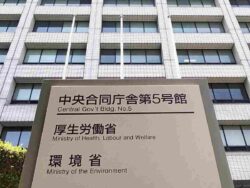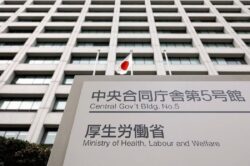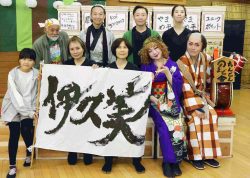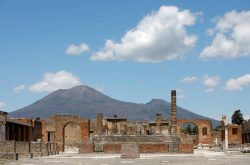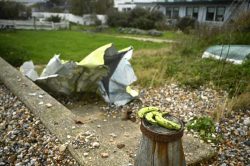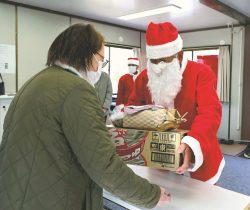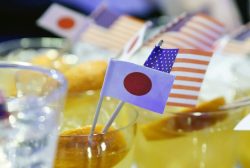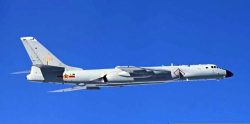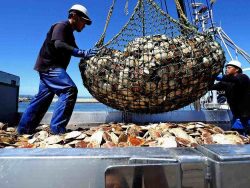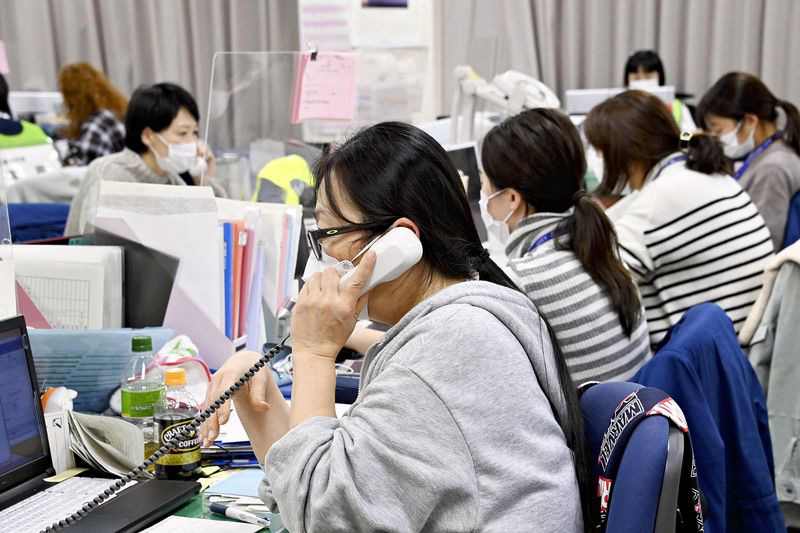
Public health center staff take calls in Shinagawa Ward, Tokyo, on Thursday.
17:27 JST, January 21, 2022
Public health centers were stretched to the limit during last summer’s fifth wave of the novel coronavirus pandemic, prompting the government in October to ask prefectural governments to make additional arrangements in preparation for future outbreaks.
Steps were put in place so that public health centers would be able to triple the number of personnel from the national average of 23.5 in normal times to 73.3 if infections rapidly increased. The plans were based on an assumption that daily infections would reach a peak of about 31,200, higher than the 25,990 logged at the peak of the fifth wave.
However, the emergence and spread of the highly transmissible omicron variant has thrown a spanner in the works.
More than 40,000 daily cases were confirmed nationwide on Wednesday and Thursday, exceeding previous projections.
Some public health centers appear to be struggling to keep up with the increased workload arising from this surge in coronavirus cases. In a bid to reduce their burden, the Health, Labor and Welfare Ministry on Wednesday told prefectural governments to scale down contact tracing efforts.
Two types of so-called epidemiological investigations are conducted to identify close contacts: prospective surveys that aim to identify the close contacts of patients and advise them to isolate; and retrospective surveys that attempt to trace the source of infection by asking patients about their movements over the previous two weeks.
The ministry has told health centers to scale down retrospective surveys and limit prospective surveys to people within the same household and medical and elderly facilities, at which people are at greater risk of becoming seriously ill.
On Wednesday, the Tokyo metropolitan government urged public health centers in the capital to consider a framework under which the infected person themselves gets in touch with people they consider to be close contacts.
The companies that patients work for will be asked to help with tracing close contacts and monitoring the health of their colleagues so that public health centers can devote more resources to monitoring the health of people recuperating at home and handling cases in which the condition of patients suddenly deteriorates.
Centers in Osaka have taken as many as three days to contact patients in some cases. Consequently, the Osaka prefectural government switched Tuesday to a system in which tracing close contacts is basically entrusted to workplaces and schools.
“Unless we change our thinking that holds public health centers handle everything, we won’t be able to deal with the omicron variant,” said Osaka Gov. Hirofumi Yoshimura, urging the public to cooperate.
However, some workplaces have expressed concern about being tasked with tracing close contacts.
“The bottom line is that it’s up to the person themselves to report where they’ve been,” an official at a major telecommunications company in Osaka said. “Even if we can figure out where they’ve been while at work, it’s difficult to accurately confirm their movements out of working hours.”
An official at an Osaka-based food manufacturer said, “I’m no expert, so I’m not sure if I would be able to say for certain whether someone is a close contact or not.”
Doubts over effectiveness
The average incubation period of the omicron variant is a relatively short three days. Some experts have suggested this has diluted the ability of epidemiological investigations to prevent infections from spreading.
Prof. Tatsuo Unemi at Soka University’s Faculty of Science and Engineering concluded that continuing epidemiological investigations would not lead to a decrease in Tokyo cases based on a model of infections in the capital.
“Omicron patients develop symptoms after only a short period of time. By the time close contacts have been identified through epidemiological investigations, often, they have already developed symptoms, been to a medical facility to get checked, and been identified as a positive case,” Unemi said.
According to estimates by Asako Chiba, a postdoctoral fellow at the Tokyo Foundation for Policy Research, the latest outbreak could lead to 800,000 Tokyo residents — about 6% — being characterized as close contacts, making it necessary for them to isolate.
“If only 50-60% of close contacts are identified, the impact of isolation on preventing further transmission becomes extremely low,” Chiba said. “We need to carefully think about whether to continue making people isolate, because the measure could bring daily life to a standstill.”
Calls for reclassification
Some local governments are calling for a change in how the novel coronavirus is classified under the Infectious Diseases Control Law.
The virus is currently categorized as a new strain of influenza, which places it among Category 2 infectious diseases that also include tuberculosis. This means public health centers must be notified of all infections, and need to coordinate hospitalization or recuperation at home for patients.
Category 5 infectious diseases, such as seasonal flu, do not require administrative authorities to make arrangements for hospitalization and other procedures, which means a lighter workload for health centers. However, placing coronavirus in this category would have drawbacks for patients, such as depriving them of the comprehensive health observation services that would be offered under a higher category.
Tokyo Gov. Yuriko Koike has suggested that such a change should be considered. “I’d like to have scientific findings compiled on matters including changing the classification to Category 5,” Koike said.
The governor of Osaka has also said the central government should “hold substantial discussions with experts.”
"Society" POPULAR ARTICLE
-

M4.9 Earthquake Hits Tokyo, Neighboring Prefectures
-

M7.5 Earthquake Hits Northern Japan; Tsunami Waves Observed in Hokkaido, Aomori and Iwate Prefectures
-

Tsukiji Market Urges Tourists to Avoid Visiting in Year-End
-

Israeli Tourists Refused Accommodation at Hotel in Japan’s Nagano Pref., Prompting Protest by Israeli Embassy and Probe by Prefecture
-
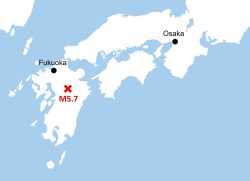
M5.7 Earthquake Hits Japan’s Kumamoto Pref., Measuring Upper 5 Intensity, No Tsunami Expected
JN ACCESS RANKING
-

Keidanren Chairman Yoshinobu Tsutsui Visits Kashiwazaki-Kariwa Nuclear Power Plant; Inspects New Emergency Safety System
-

Imports of Rare Earths from China Facing Delays, May Be Caused by Deterioration of Japan-China Relations
-

University of Tokyo Professor Discusses Japanese Economic Security in Interview Ahead of Forum
-

Japan Pulls out of Vietnam Nuclear Project, Complicating Hanoi’s Power Plans
-

Govt Aims to Expand NISA Program Lineup, Abolish Age Restriction



